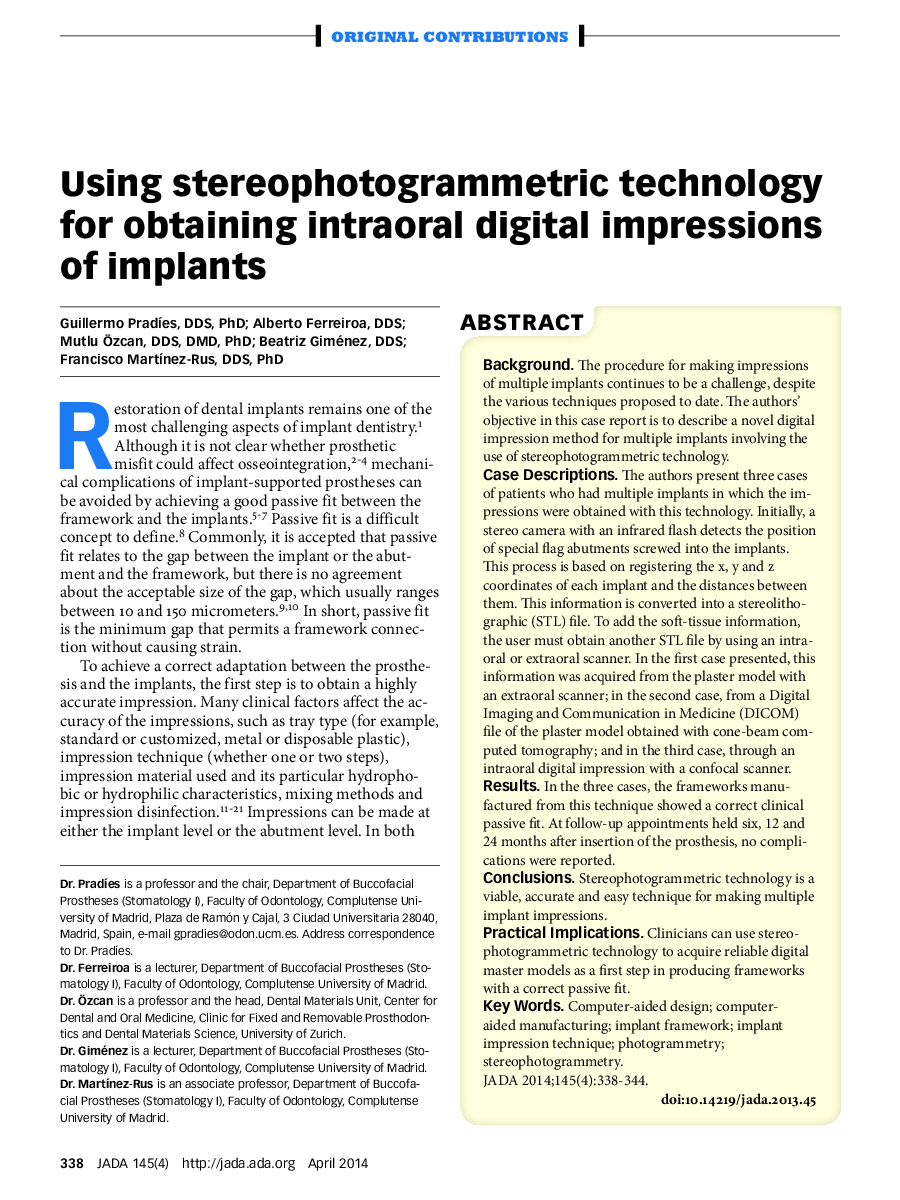| Article ID | Journal | Published Year | Pages | File Type |
|---|---|---|---|---|
| 3136955 | The Journal of the American Dental Association | 2014 | 7 Pages |
ABSTRACTBackgroundThe procedure for making impressions of multiple implants continues to be a challenge, despite the various techniques proposed to date. The authors' objective in this case report is to describe a novel digital impression method for multiple implants involving the use of stereophotogrammetric technology.Case DescriptionsThe authors present three cases of patients who had multiple implants in which the impressions were obtained with this technology. Initially, a stereo camera with an infrared flash detects the position of special flag abutments screwed into the implants. This process is based on registering the x, y and z coordinates of each implant and the distances between them. This information is converted into a stereolithographic (STL) file. To add the soft-tissue information, the user must obtain another STL file by using an intraoral or extraoral scanner. In the first case presented, this information was acquired from the plaster model with an extraoral scanner; in the second case, from a Digital Imaging and Communication in Medicine (DICOM) file of the plaster model obtained with cone-beam computed tomography; and in the third case, through an intraoral digital impression with a confocal scanner.ResultsIn the three cases, the frameworks manufactured from this technique showed a correct clinical passive fit. At follow-up appointments held six, 12 and 24 months after insertion of the prosthesis, no complications were reported.ConclusionsStereophotogrammetric technology is a viable, accurate and easy technique for making multiple implant impressions.Practical ImplicationsClinicians can use stereophotogrammetric technology to acquire reliable digital master models as a first step in producing frameworks with a correct passive fit.
